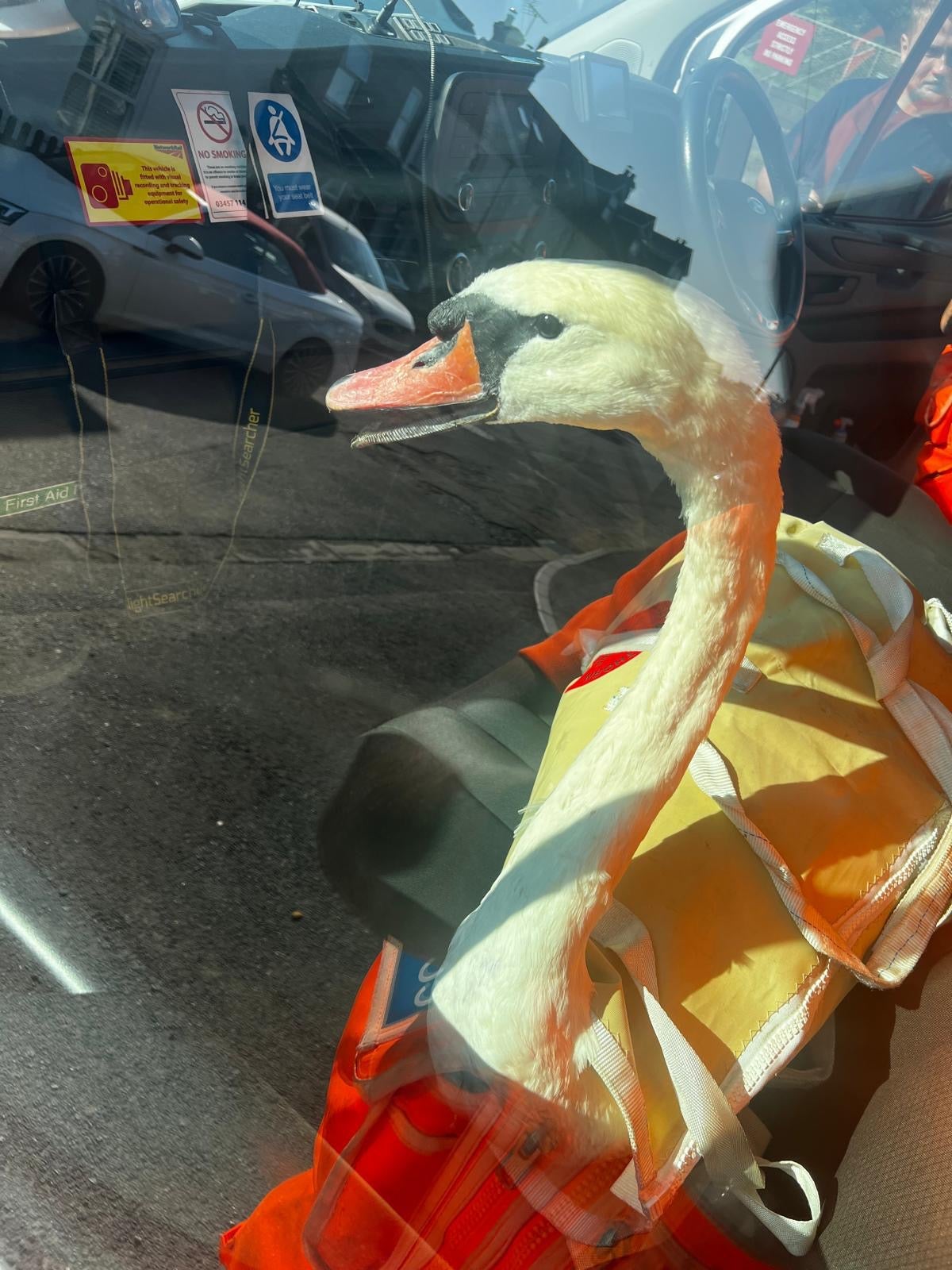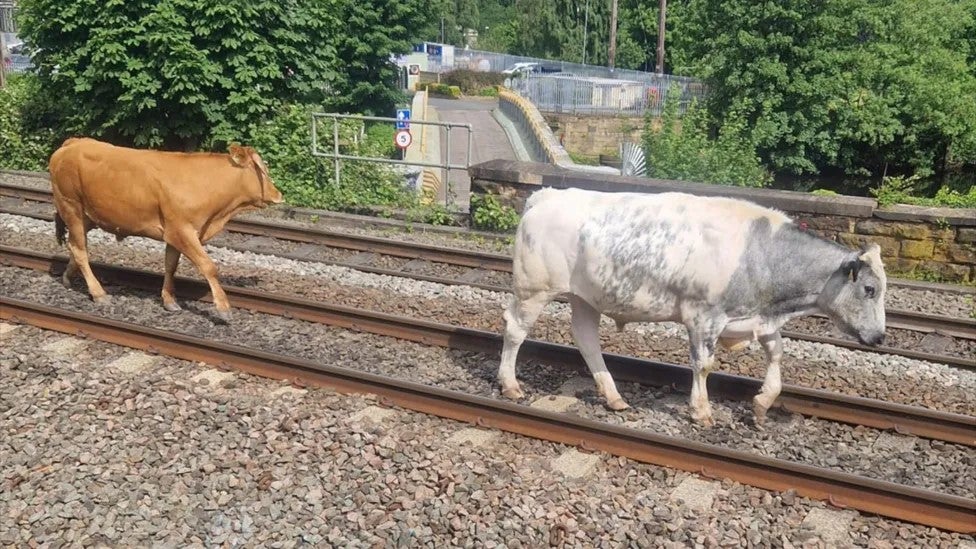Rail workers get specialist training on how to remove swans trespassing on tracks
Network Rail workers are undergoing some rather unusual training in an attempt to stop pesky animals from causing delays after they wander onto the train tracks
Your support helps us to tell the story
From reproductive rights to climate change to Big Tech, The Independent is on the ground when the story is developing. Whether it's investigating the financials of Elon Musk's pro-Trump PAC or producing our latest documentary, 'The A Word', which shines a light on the American women fighting for reproductive rights, we know how important it is to parse out the facts from the messaging.
At such a critical moment in US history, we need reporters on the ground. Your donation allows us to keep sending journalists to speak to both sides of the story.
The Independent is trusted by Americans across the entire political spectrum. And unlike many other quality news outlets, we choose not to lock Americans out of our reporting and analysis with paywalls. We believe quality journalism should be available to everyone, paid for by those who can afford it.
Your support makes all the difference.Rail staff are being taught how to safely remove swans who sneak onto train tracks potentially severely delaying journeys and putting themselves in danger.
Network Rail has revealed that they have partnered up with The Swan Sanctuary, a charity dedicated to the care and treatment of swans across the UK, to learn how to safely remove the trespassing birds from the railway and release them back into the wild.
There have been at least 143 swan incidents where these elegant birds have invaded the train tracks across the country in the 2023 to 2024 period, Network Rail says.
This places the swans at around sixth place in the list of the top 10 railway trespassers – but the birds barely compete with those who took the top spot with around 19,300 trespassing incidents this period: humans.
The Swan Sanctuary is providing training to some of Network Rail’s mobile operational managers, which help look after railways, on how to safely remove the birds from the train tracks.
As part of the training, the managers receive specialist hands-on training with swans, and by doing so, learn how to correctly and safely restrain the swans and transport them away from the railway tracks, Network Rail said.
However, this comes with its challenges, as in some places, the railway carries 750 volts of electricity, making bird removal a tricky task.

Tom Desmond, an operations director from Network Rail, said that, despite deer being the largest group of railway trespassers out of the animal kingdom, swans are, in fact, “the most impactful animal trespassers for disrupting passenger services”.
“Our partnership with the Swan Sanctuary provides our front-line teams with invaluable skills and training to tackle the challenge of quickly and safely removing our feathered friends from the railway,” he added.
While Network Rail has found that humans are by far the worst offenders of track trespassing, with one incident every half an hour, deer come in second place with 349 incidents over the year.
Deer tend to live in high numbers across rural, forested areas, commonly found adjacent to a lot of railway lines.
Their population has increased significantly over the past few decades, with an estimated two million deer living across the country today – the highest levels within 1,000 years – the Department for Environment, Food and Rural Affairs says.

While operational managers are busy capturing swans, Network Rail and London North Eastern Railway have been trialling the use of AI to try and deter deer from even approaching the tracks.
The system has so far deterred just under 6,000 deer from accessing the railway – potentially saving the animals’ lives and avoiding train journey delays for passengers.
The automated system uses sound and vision sensors to identify when a deer is near and sets off an alarm to warn it away. Inspection of fencing along the railways has also been carried out to make sure that animals are kept away from the tracks.
Animal charities have welcomed Network Rail’s commitment to keeping animals safe from the dangerous voltage and high-speed trains that traverse their system.
The British Deer Society told The Independent that they are “highly encouraged” by Network Rail’s AI system used to warn off deer from accessing active railway tracks.
“Sadly, deer and other wildlife are often unable to recognise such man-made hazards, so any measures that can be put in place to help deter and protect them are very welcome,” they said.

After deer, sheep is the next largest culprit for trespassing, with 177 incidents, followed by birds in general in fourth place with 172 incidents and cows in fifth with 156 incidents.
Dogs, cats, badgers and foxes complete the list of Network Rail’s ‘worst trespassing criminals’ list across the country
There have also been a few rogue incidents of different animals entering the tracks without permission, including bees, mice, hedgehogs and even a llama and a tortoise.
“Trespassing on the railway is a serious offence that causes delays to thousands of trains every year and can be very costly for people – causing death and life-changing injuries due to the railway’s many hidden dangers,” Helen Hamlin, Network Rail’s operations chief, said.
She added: “This summer, when we see trespass at its peak, our message is clear: whoever you are, child, adult, dog walker, holiday maker or beast – stay off the tracks.”
For more travel news and advice, listen to Simon Calder’s podcast

Join our commenting forum
Join thought-provoking conversations, follow other Independent readers and see their replies
Comments